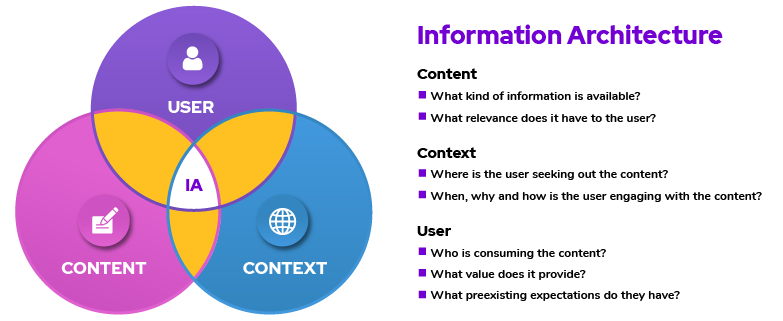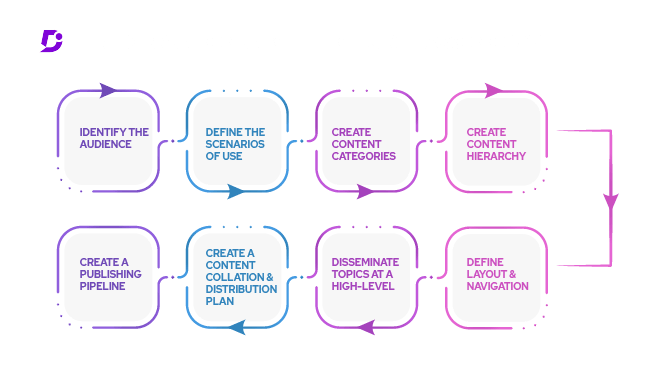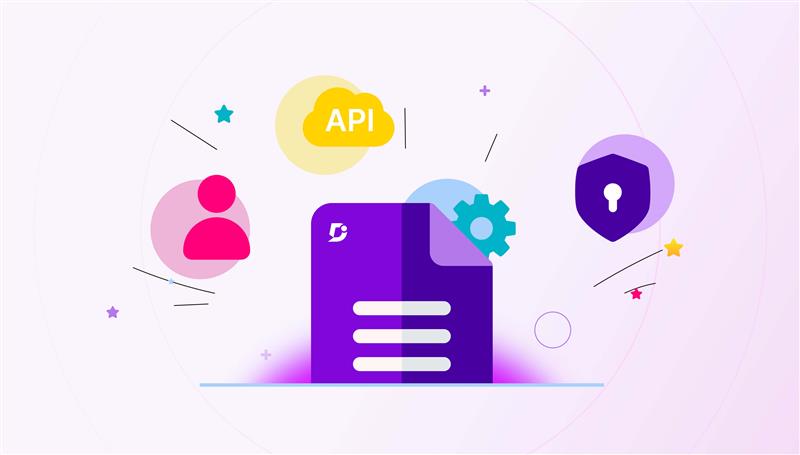Information architecture (IA) can be challenging for a technical writer. There are many factors to consider: from how users will use the information to how it might be indexed in an online encyclopedia. Let us first look at what Information Architecture stands for and then learn about its creation.
What is Information Architecture (IA)?
Information architecture is a discipline that primarily focuses on how we organize the information in a document. It is the amalgamation of users, the context, and the content.

Technical writing is not just about the words or grammar you use. It is also about presenting your information to readers so there can understand it and find what they need easily and quickly.
To create an information architecture, you must first know what kind of content you have. Information is organized by type of content, not by its intended audience or some other secondary factor.
But what are the distinct types of content? The following article covers various tips for creating a knowledge hierarchy for your next technical writing project.
Defining what is important
As you are planning information architecture, you will need to determine which topics are most significant within your content library.
It is essential to make this distinction between necessary and less significant topics when organizing content because it will determine the hierarchy and structure of your information. You may have several secondary topics that are related to your many topics.
Stake out the boundaries
If your content is modular and can be reorganized or repurposed, then it is best to wait until the end to establish boundaries. This way, you can take a modular approach to organize your content and adjust it as needed.
However, if your content is not modular and tightly coupled, you can establish boundaries sooner. Technical writers should keep the following in mind when creating the information architecture for modular content,
Boundaries can be based on
- Topics
- Audiences
- Product lines
- Brands
- Organizational units
- and more.
For example, if you want to create an information architecture based on organizational units, such as Customer Service or Human Resources. In this case, you might want to create boundaries based on cross-organizational such issues as talent acquisition, employee happiness, operations, etc.
Interested in the Document360? Schedule a demo with one of our experts
Book A Demo
Know your readers
Depending on your target audience, you will want to incorporate certain aspects into your information architecture that make it easier for readers to navigate, understand, and find what they need.
Certain basic practices can help make your content more accessible, such as writing in plain language, including a glossary of terms, creating visual representations (images, GIFs, videos) of complex processes, and creating an information architecture that is logical and easy to follow.
Also, Check out: LLM Agents for Technical Writing
Establish a framework
Technical communicators should always look for ways to build a framework for their content that is easy to follow and logical. A common framework for any type of content is a process or procedure framework often represented as a flowchart or a sequence diagram.
There are many bases on which you can create a framework for your content.
- Information architecture based on a process or procedure
- Sequence diagram
- Flowchart
- Decision tree
- Decision list
- Outcome-oriented matrix
This will help readers understand your content better and easily find what they need.
Define levels and types of content
Once you have determined your essential topics and boundaries, you can determine the levels and types of content within your information architecture. An excellent way to think about this is to decide how many layers you want to place your content on.
Levels and types of content can include Primary, Secondary, Tertiary, and Quaternary topics.
Also Read: Best Practices to Improve Knowledge Base Information Architecture
Summing up
Creating an information architecture for your content is a key step in the technical writing process. This is the phase where you will figure out what topics are most significant, create a framework, and decide on levels and types of content. Once you have a set architecture in place, the writing part is like driving within your Information architecture’s set lanes.
An intuitive technical documentation software to easily add your content and integrate it with any application. Give Document360 a try!
GET STARTED





 –
– 

